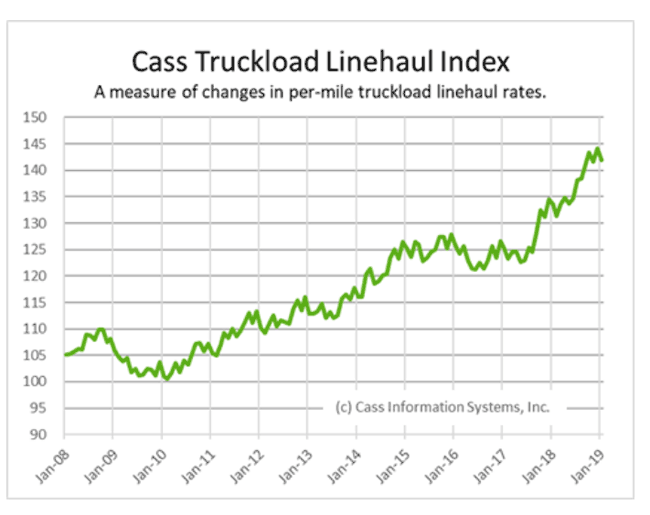Free or very low cost deliveries have put a hit on the bottom lines of many retailers in an Amazon Prime world, with many predicting someday free deliveries that certainly aren't free to the merchants would begin to rationalize themselves.
God luck with that idea.
Supply Chain Digest Says... |
|
| Panera does its own deliveries in most markets. But that capability came at a hefty price. |
 |
What do you say? |
| Click here to send us your comments |
 |
| Click here to see reader feedback |
|
|
Now, the concept of low cost deliveries for growing on-line orders for home deliveries is creating similar dilemma and profit woes for many restaurants and grocery chains as well.
For example, the Wall Street Journal says it costs a supermarkets on average about $10 per order to deliver to a customer's residence, while they are charging around $8 per delivery. That based on data from a survey of supermarket executives by consulting firm Capgemini .
What's worse, only 1% of almost 3000 consumers surveyed were willing to pay the full cost of grocery delivery.
Or consider restaurant chain Panera Bread. The Journal article notes Panera charges $3.00 home it delivery in most of the country, even though it estimates its cost per delivery (car expense, driver, special packaging) is around $5.00 – which actually sounds too low.
So a customer ordering $10-12 dollars' worth of food for delivery is generating little profit or even a lost for the store. However, Panera does say that when people order ome hdelivery, they tend to order for larger groups, so the average check is higher than it is for dine-in customers.
Still, "Billions of dollars have been spent in a quest to build services that reliably move fresh food from one place to another, yet many in the business wonder if they will ever get the economics right," the Journal article notes, adding "Most delivery orders remain unprofitable."
Like competitors of Amazon, restaurant and grocery chains are willing to absorb the losses for now, worried they will miss the ecommerce wave and jeopardize their market positions. They also hope the dynamics will change over time.
Consumers in major metro markets are the most frequent users of food delivery, but the trend is also gaining traction in many suburbs and smaller urban markets, putting more pressure on the stores and restaurants.
Investment firm William Blair & Co. estimates sales of on-line restaurant delivery will grow to $62 billion in 2022 from about $25 billion today.
(See More Below)
|
CATEGORY SPONSOR: SOFTEON |
|
|
| |
|
|
"Customers have raised their expectations. The whole framework has changed," Frans Muller, CEO of grocery chain Royal Ahold Delhaize told the Journal. Ahold owns the Peapod grocery delivery service, which it has said is only profitable in only a handful of markets.
 Last week, Kroger reported profits were down in its recently ended fiscal quarter, citing huge investments in the hundreds of millions of dollars in its ecommerce operations. Its shares fell a sharp 10% that day on the news. Last week, Kroger reported profits were down in its recently ended fiscal quarter, citing huge investments in the hundreds of millions of dollars in its ecommerce operations. Its shares fell a sharp 10% that day on the news.
Walmart is testing its options, partner with a number of third parties and through Jet.com, an ecommerce site it bought for $3.3 billion in 2016. Walmart says its delivery business is up, but overall its ecommerce losses are expected to increase this year - even as Amazon made some real profits in 2018, though it warned 2019 profits could be reduced from its massive investments.
Grocers have special challenges, as most food must be packaged carefully, often segregated from other items, and sent in refrigerated trucks, all of which add to costs.
The Journal says the average on-line grocery order contains dozens of items, which often have different temperature and handling requirements.
Restaurants also need to pack orders in special containers, may need temperature controlled storage in delivery trucks, and must deliver within a short windows to keep the meals fresh for consumers.
Unlike most restaurants, which use third-party delivery companies such Grubhub, DoorDash, and Uber Eats, Panera does its own deliveries in most markets. But that capability came at a hefty price. The chain spent six years and more than $100 million to develop the technology to process its own on-line orders.
The Journal says the investment cut into profits for three years, but began to pay for itself in 2016.
Further complicating matters is that many of the delivery services actually take the customer orders for restaurant meal delivery from their own web or mobile sites. Others handling the order-taking through their apps but outsourcing the actual delivery to third-party services.
So it's a brave new ecommerce world for grocers and restaurants too – and home delivery is at the heart of the challenges.
Any reaction to this ecommerce dilemma for grocers and restaurants? Let us know your thoughts at the Feedback section below.
Your Comments/Feedback
|

